The largest and most impressive mosque complexes were constructed in the 16th and 17th centuries. Although, those built in the 18th and 19th centuries remain equally significant in terms of style and representation.
OTTOMAN IMPERIAL MOSQUES
Ottoman sultans and members of the dynasty commissioned numerous historic monuments, often in the form of külliye, vast complexes centred around a mosque and surrounded by various structures serving charitable and social purposes. These included madrasas (religious schools), kitchens and other buildings designed to provide services to the poor.
The largest külliyes date back to the 16th and 17th centuries, although mosques constructed during the 18th and 19th centuries are also of great historical importance. In the 15th century, following his conquest of Constantinople, Fatih Sultan Mehmed commissioned the construction of two grand mosques. Unfortunately, both of these original structures were later destroyed by earthquakes or fires and had to be rebuilt.
Mimar Sinan, the chief imperial architect for the Ottoman Empire for over 50 years, designed and oversaw the construction of many of Istanbul’s most iconic complexes. His architectural vision set the standard for subsequent architects of külliyes throughout the empire.
While Istanbul is home to some of the most famous Ottoman imperial mosques, many others can be found in cities across Turkey. Bursa, the first proper capital of the Ottoman Empire, is home to several historically significant religious structures. You will also find other notable imperial mosques in Edirne, Konya, Amasya, Manisa and even in Damascus.
BAYEZID MOSQUE (1506)
Sultan Bayezid II commissioned the Bayezid Mosque as the third major imperial mosque complex, after the conquest of Constantinople.
The first two were the Eyüp Sultan Mosque and the Fatih Mosque. Both were later destroyed and rebuilt. This makes the Bayezid Mosque historically and architecturally significant as the oldest surviving monumental Ottoman imperial mosque in the city.
Conveniently, it is right next to the Grand Bazaar.
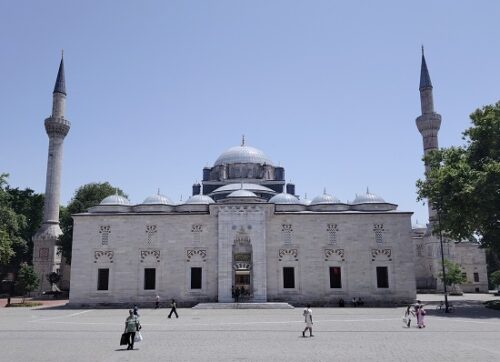
YAVUZ SULTAN SELIM MOSQUE (1527/1528)
The Yavuz Sultan Selim Mosque, the second-oldest Ottoman imperial mosque in Istanbul, stands on the city’s fifth hill, overlooking the Golden Horn. Commissioned by Sultan Suleiman the Magnificent in memory of his father, Sultan Selim I, it was completed in 1527–1528 by architect Alaüddin.
The garden behind the mosque contains the türbe (mausoleum) of Sultan Selim I, his wife Hafsa Sultan and later Sultan Abdülmecid I.
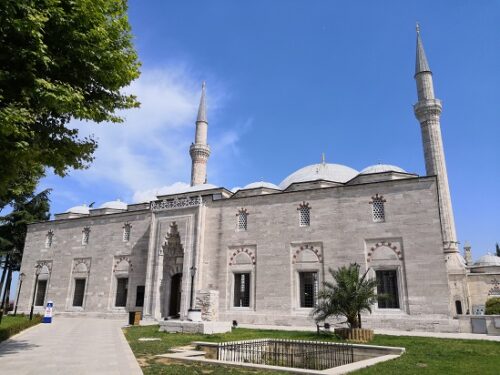
HASEKI SULTAN MOSQUE (1539)
One of the most notable complexes associated with a powerful Ottoman woman is the Haseki Sultan Complex, built in the name of Hürrem Sultan. It consisted of a mosque, madrasa, hospital (darüşşifa), elementary school (mektep) and soup kitchen (imaret).
Hürrem financed its construction with her dowry soon after her marriage to Sultan Suleiman the Magnificent.
What makes the complex especially significant is that it was the first imperial project of Mimar Sinan. He completed it in stages – the mosque in 1539, the madrasa in 1540, the soup kitchen in 1541 and the hospital in 1551.
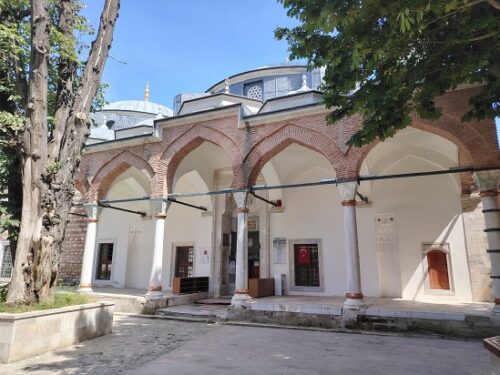
ŞEHZADE MOSQUE (1548)
The Şehzade Mosque, located on Istanbul’s third hill along the route to the Fatih and Yavuz Sultan Selim Mosques, is another of Sultan Suleiman’s commissions. He built this mosque in memory of his beloved son Şehzade Mehmed, who died in 1543 at the age of 22.
Remarkably, this was Mimar Sinan’s first major imperial project. Despite being an early work, it remains one of his most ambitious designs.
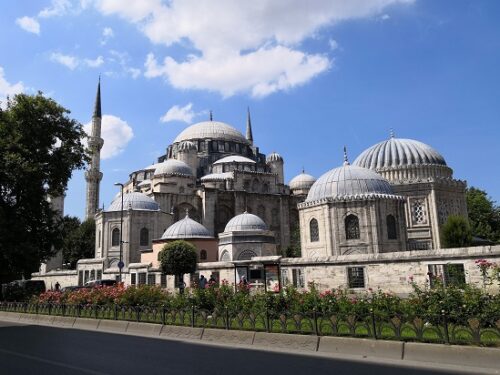
MIHRIMAH SULTAN MOSQUE (1548)
Crossing to the Asian side, the first historic monument that you can see upon arrival in Üsküdar is the Mihrimah Sultan Mosque. Mimar Sinan built it in 1548.
Originally a complex with a madrasa, soup kitchen, school and hospital, it also stands as one of the earliest examples of Sinan’s imperial commissions.
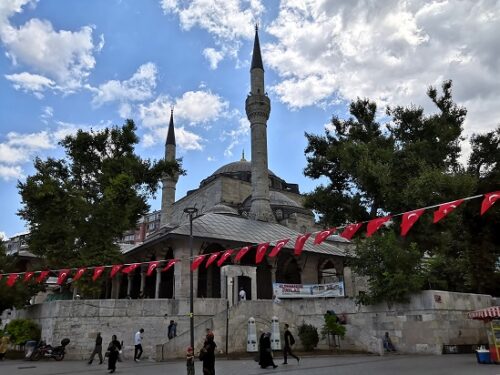
SÜLEYMANIYE MOSQUE (1557)
The Süleymaniye Mosque dominates the skyline as one of Istanbul’s most iconic landmarks, rivalled only by the Blue Mosque.
Commissioned by Suleiman the Magnificent and completed by Mimar Sinan in 1557, it is the second-largest mosque of the Ottoman era in Istanbul.
The complex included not only the mosque but also a hospital, schools, baths, caravanserai, four madrasas, a hadith college, a medical school and a public kitchen that served the poor, reflecting the multifunctional character of Ottoman imperial architecture.
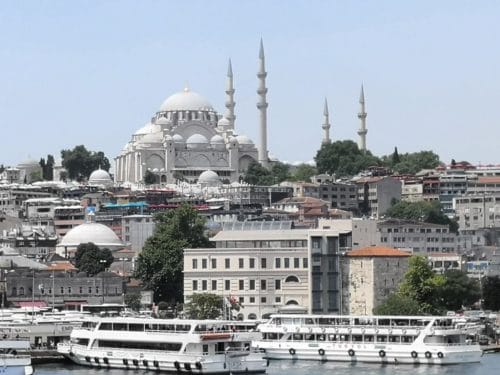
MIHRIMAH SULTAN MOSQUE (c. 1570)
Mihrimah Sultan also gave her name to a second mosque, built around 1570 near Edirne Gate, close to the Chora Church and Tekfur Palace.
Larger than her mosque in Üsküdar, this one is considered a monumental imperial mosque.
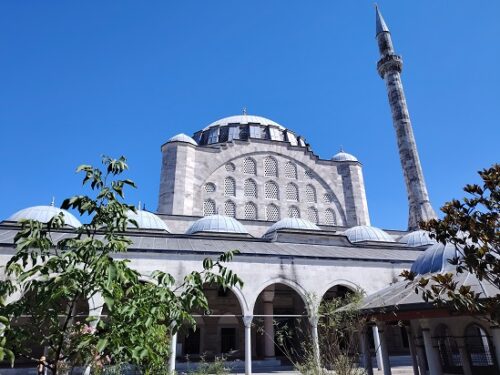
ATIK VALIDE MOSQUE (1586)
In the same period, Mimar Sinan undertook the construction of the Atik Valide Mosque and its extensive külliye in Üsküdar, commissioned by Nurbanu Sultan, the Venetian-born consort of Sultan Selim II and mother of Murad III.
As Valide Sultan, Nurbanu wielded considerable influence at court. Her patronage of this monumental project was both a demonstration of her political authority and a testament to the prominent role played by royal women in Ottoman architectural sponsorship during the 16th century.
Construction of the complex was carried out in three phases between 1571 and 1586. It reflected the evolving status of Nurbanu Sultan and also the growing scale of her endowment. The initial phase, begun during her lifetime, established the mosque as the central structure.
A subsequent enlargement of the mosque between 1577 and 1578 coincided with her elevation to Valide Sultan. It symbolically reinforced her new role as the most powerful woman in the empire.
The final phase, completed after her death in 1583, expanded the complex into one of the largest complexes in Istanbul at the time.
It included a mosque, madrasa, hadith college, Qur’an school, elementary school, dervish convent, hospital, hospice, guesthouse and also caravanserais.
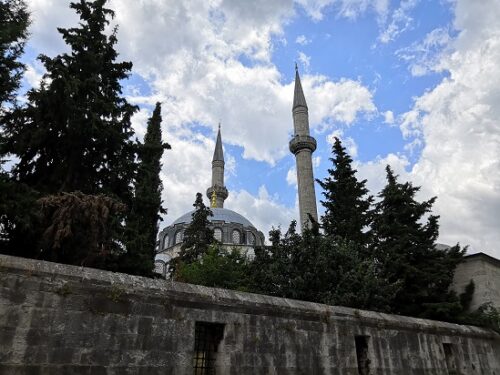
BLUE MOSQUE (1616)
Sultan Ahmed I commissioned the Sultan Ahmed Mosque, or the Blue Mosque, in the early 17th century.
Constructed directly opposite Hagia Sophia, it was a statement of Ottoman authority following the Peace of Zsitvatorok and the losses sustained in the Ottoman–Safavid War.
Its six minarets and harmonious proportions have ensured its status as one of the most celebrated examples of Ottoman architecture.
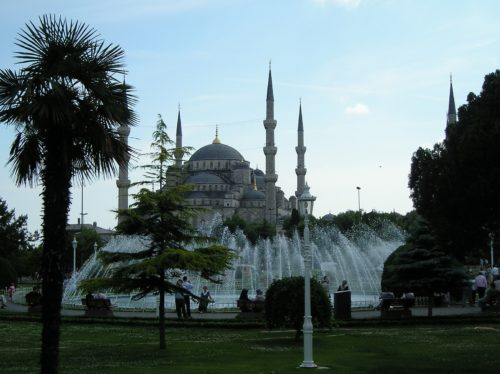
ÇINILI MOSQUE (1640)
Kösem Sultan commissioned the Çinili Mosque in Üsküdar, completed in 1640. Though modest in scale, it is renowned for its exquisite Kütahya tiles.
Photographs cannot capture its full beauty. You must experience it in person to appreciate the complexity of its decoration.
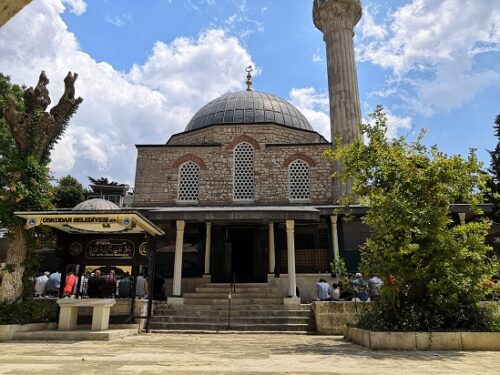
YENI MOSQUE (1665)
Another landmark is the Yeni Mosque in Eminönü, one of Istanbul’s most recognizable sites.
Construction began in 1597 under Safiye Sultan, but political upheavals halted progress after her son Mehmed III’s death.
The site remained in ruins until after the Great Fire of 1660. However, Turhan Hatice Sultan resumed its construction and added the Spice Bazaar to the complex.
The mosque was completed in 1665. Over time, it became the Yeni Mosque.
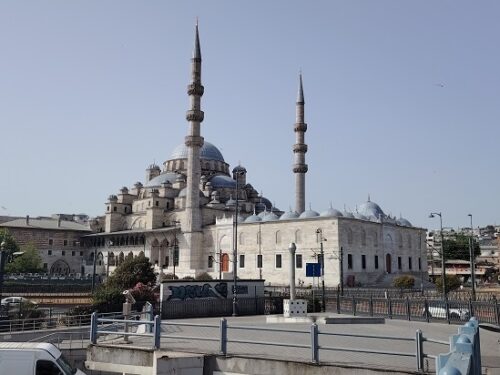
In the next post, we will explore the 18th and 19th century Ottoman imperial mosques of Istanbul. However, these mosques form only part of the vast Ottoman heritage of the city, a heritage that requires both time and dedication to fully appreciate.
Back to Turkey


